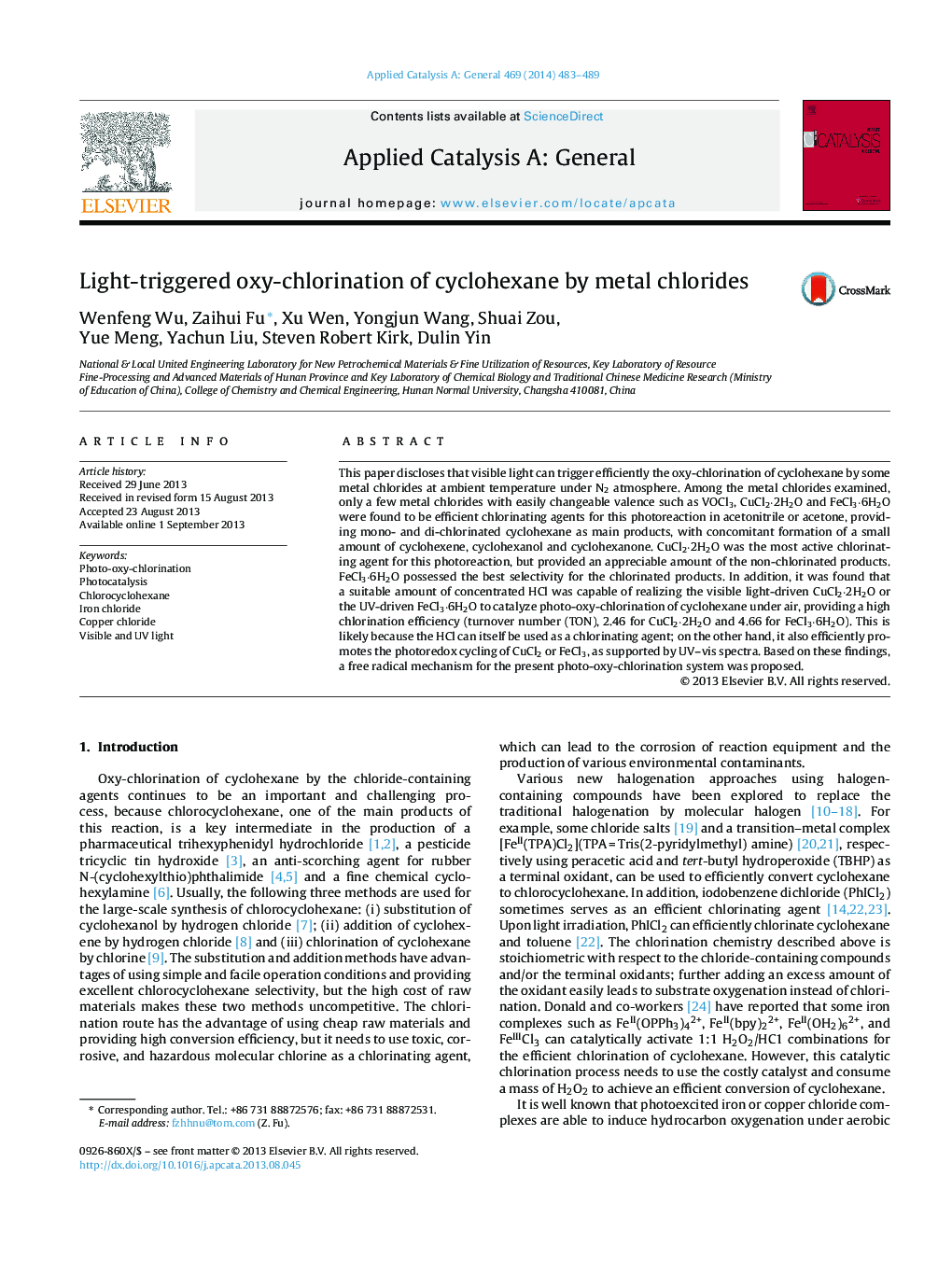| کد مقاله | کد نشریه | سال انتشار | مقاله انگلیسی | نسخه تمام متن |
|---|---|---|---|---|
| 40201 | 45845 | 2014 | 7 صفحه PDF | دانلود رایگان |
• Using FeCl3 as efficiently agent or catalyst for photo-chlorination of cyclohexane.
• Utilization of more accessible visible light.
• Utilization of more costeffective acetonitrile or acetone as solvent.
• An excellent selectivity for chlorinated products.
• The concentrated HCl significantly promotes this photocatalyzed chlorination.
This paper discloses that visible light can trigger efficiently the oxy-chlorination of cyclohexane by some metal chlorides at ambient temperature under N2 atmosphere. Among the metal chlorides examined, only a few metal chlorides with easily changeable valence such as VOCl3, CuCl2·2H2O and FeCl3·6H2O were found to be efficient chlorinating agents for this photoreaction in acetonitrile or acetone, providing mono- and di-chlorinated cyclohexane as main products, with concomitant formation of a small amount of cyclohexene, cyclohexanol and cyclohexanone. CuCl2·2H2O was the most active chlorinating agent for this photoreaction, but provided an appreciable amount of the non-chlorinated products. FeCl3·6H2O possessed the best selectivity for the chlorinated products. In addition, it was found that a suitable amount of concentrated HCl was capable of realizing the visible light-driven CuCl2·2H2O or the UV-driven FeCl3·6H2O to catalyze photo-oxy-chlorination of cyclohexane under air, providing a high chlorination efficiency (turnover number (TON), 2.46 for CuCl2·2H2O and 4.66 for FeCl3·6H2O). This is likely because the HCl can itself be used as a chlorinating agent; on the other hand, it also efficiently promotes the photoredox cycling of CuCl2 or FeCl3, as supported by UV–vis spectra. Based on these findings, a free radical mechanism for the present photo-oxy-chlorination system was proposed.
This paper discloses that visible light can trigger efficiently the oxy-chlorination of cyclohexane by some metal chlorides under N2 and the concentrated HCl was capable of realizing the visible light-driven CuCl2 or the UV-driven FeCl3 to efficiently catalyze this photoreaction under air.Figure optionsDownload high-quality image (170 K)Download as PowerPoint slide
Journal: Applied Catalysis A: General - Volume 469, 17 January 2014, Pages 483–489
